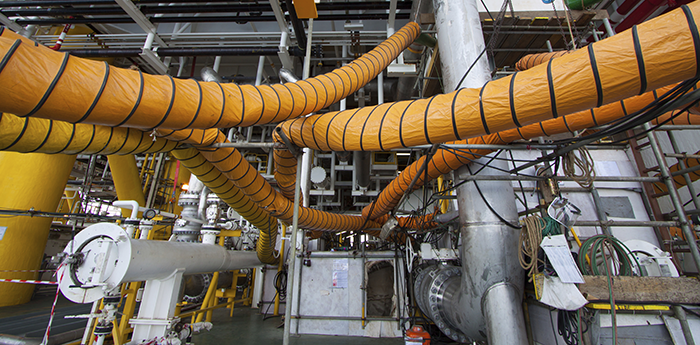Treatment of refinery waste fluids presenting the hazards of hydrogen sulfide and hydrocarbon gas emissions involves a process of chemical treatment where applied product chemically reacts with the acid gases while physically absorbing and holding the hydrocarbon gases in solution. This is a dynamic process that requires homogeneous, non turbulent mixing and sufficient residence time for solution equilibration.
For efficient treatment and emissions control of refinery waste fluid, West Penetone offers the following two-product procedure for review and evaluation.
- ROC 55X – high-capacity degasification aid and hydrogen sulfide scavenger
- Aqueous batch treatment rate – 2 L per m3 of sour fluid per 100 ppmw of H2S
- PENETONE 8507H – high efficiency hydrogen sulfide scavenger
- Gas sweetening rate – approximately 0.2 kg of H2S removal per L of product. In application, for example, note that 5% H2S in air = 50,000 ppmv in air = 75,030 mg/m3 in air. 1 m3 of air would contain approximately 0.075 kg of H2S with 1 L of product expected to treat within 3 m3 of contaminated air.
Treatment Procedure
- Pump in a minimum of 0.5% v/v of ROC 55X into an empty and gas-free truck tank.
- Connect an appropriate gas scrubber, containing PENETONE 8507H, onto the truck vapor return line.
- Ensure all lines are open and initiate pumping of the waste fluid into the truck tank at or below estimated maximum instantaneous truck-out rates (within 1.0-2.0 m3/min is recommended).
- Monitor gas scrubber outlet for H2S and hydrocarbon gas emissions (zero H2S gas emissions are expected) and record values.
- Once truck tank is filled, allow for a minimum of 30 minutes for the solution to equilibrate and measure gas emissions at the truck vapor return line.
- Should gas emission values exceed the lower required limits, add up to a maximum total of 2% v/v of ROC 55X to the waste fluid while repeating steps 4-5.
Should volume requirements exceed 2% v/v, it is expected that a two-product approach utilizing a dedicated hydrogen sulfide scavenger and degasification surfactant concentrate would be required to effectively treat the waste fluid under the stated conditions. This approach would better allow for precise dosage of product into the waste fluid for treating and mitigating hydrogen sulfide and hydrocarbon gas emissions simultaneously in the truck tank. However, it is recommended that a gas scrubber be employed as a redundancy to capture any potential fugitive emissions.
It is expected that certain truck-out rates may produce conditions that will make it difficult to fully capture hydrocarbon gas emissions by direct fluid treatment. However, no issues with the capture of hydrogen sulfide gas are expected.

